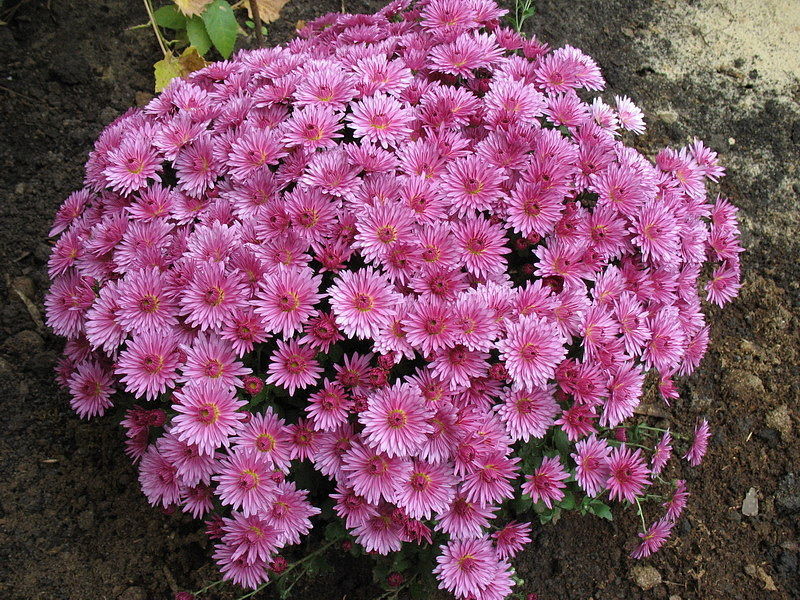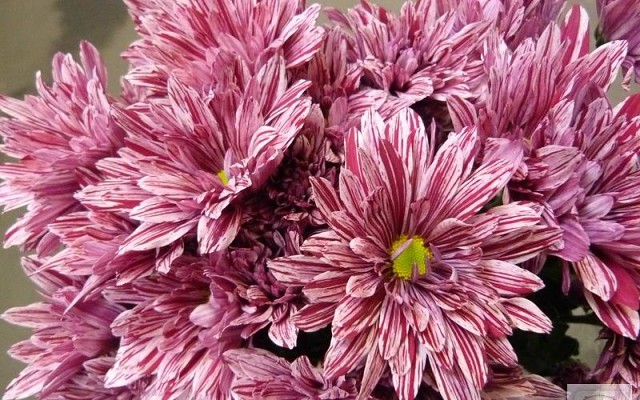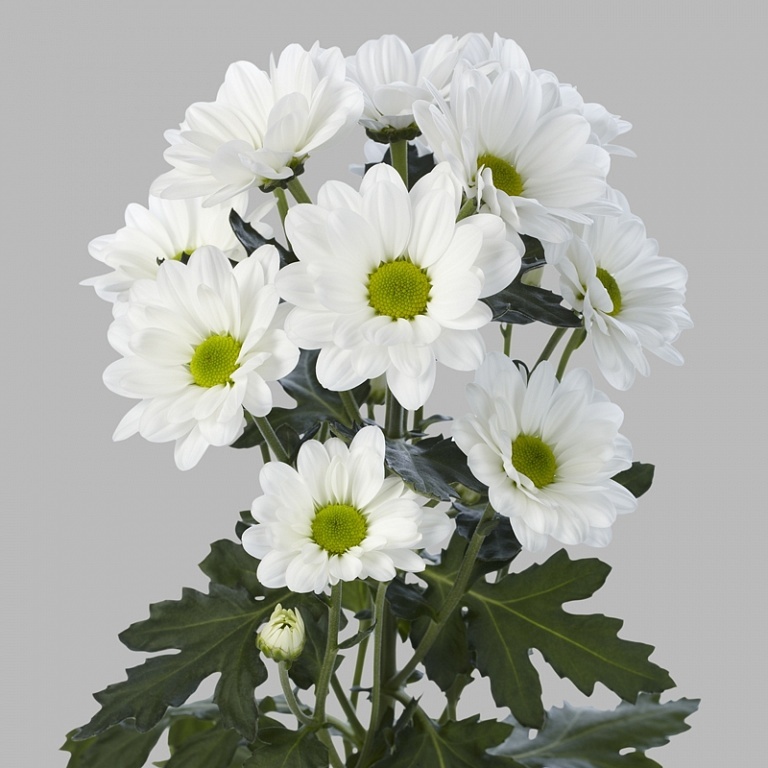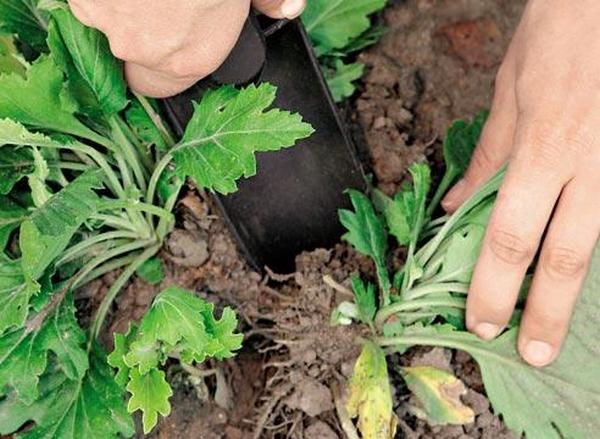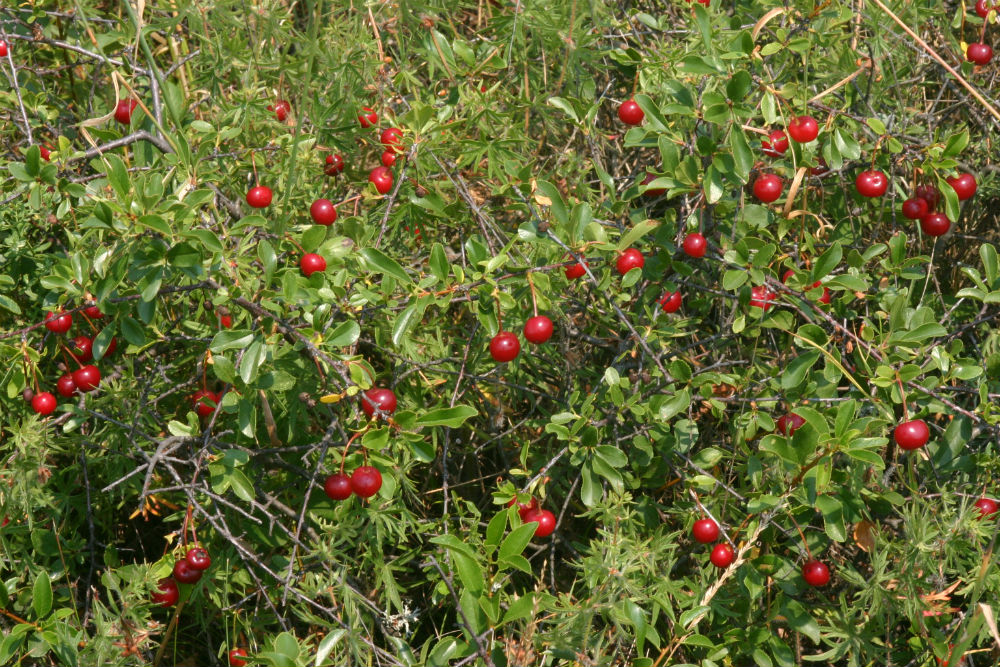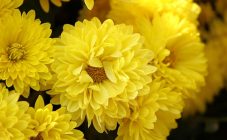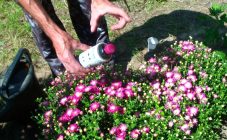Chrysanthemums have always been loved by domestic gardeners. From mid-summer until the first frost, flowers of bright colors decorate summer cottages, household plots and city streets. The species has excellent cold resistance, therefore, even after the first frost, the flowers can stand like pioneers. Breeders tirelessly breed new varieties - the variety of colors and shapes is incredible. They are unpretentious in care, which is another significant advantage of the species.
Chrysanthemum bush: description
Shrub chrysanthemum belongs to the Asteraceae family, they are also Astrovye, it is a perennial shrub plant. Plants can reach a height of 0.3 - 1.5 meters. Today there are over 650 varieties of bush chrysanthemums. The flowers are characterized by a tubular shape, as a rule, they are painted in yellow tones. There are varieties with a combined color of flowers.
On one site, a green bush is able to fully develop for no more than 5 years. After this time, chrysanthemums lose their decorative properties. Depending on the variety, the height of the bushes can vary from 30 to 150 cm.
This amazing perennial plant literally reigns in gardens and parks in autumn. It begins to bloom profusely in the middle of summer and this process lasts until the first frost. Most plant varieties have a good winter hardiness.
Varieties and types
In modern times, according to the type of flowering, several groups of bush chrysanthemums are distinguished. About each in more detail.
- The feathery group is characterized by double inflorescences, the petals hide the middle of each flower.
- The bristly appearance is similar to the feathery one, but their petals are less dense, sometimes have a curved shape. Visually, the flowers are like a brush.
- Pompon chrysanthemums have completely double inflorescences, the shape is almost regular, rounded.
- Semi-double and simple chrysanthemums have flat inflorescences, their core is open. Visually resemble a chamomile.
- Garden anemone plants have inflorescences that are similar to the previous group. But there is a significant difference - a raised and lush core. Despite the name, this type of chrysanthemum does not look like anemones.
- The spoon-shaped group visually resembles semi-double and simple ones, but their petals begin to expand closer to the ends. The spoon is clearly drawn.
- Fantasy chrysanthemums not so long ago began to be grown in Europe and Russia, but in general they come from Japan. They are feathery chrysanthemums, but have longer petals.
Compiling the conditional top of the best varieties, amateurs highlight the following names.
- Chrysanthemum Saba (Sabo).
Shrub plant with dense carved foliage. On each branch of the bush, a large number of large flowers of unusual color and shape are formed. Each inflorescence has a juicy yellow color, and the core is bright green. Pointed and long white petals are formed along the edges of the yellow basket.
- Chrysanthemum Stellini.
A bright shrub that visually resembles a chamomile. Due to the long and graceful petals, the flowers look like an asterisk. Contrasting color combinations - white with a deep purple color.
- Chrysanthemum Stalion (Stallion).
These unusual colors are characterized by miniature shapes. The plant has a strong immunity, resistant to the harmful effects of the environment. Flowers exist in rich white and yellow colors.They are actively used not only to decorate flower beds, but also to create bouquets.
- Chrysanthemum Joy.
Bush culture, capable of reaching a height of about 60 cm. The stem and leaves are fairly fleshy. Inflorescences are formed large, up to 7 cm in diameter, open at different times. The reed flowers are red, pink and white, and the tubular flowers are exceptionally dark red. Bloom in late June; duration of flowering before frost. The culture is cold-resistant and light-requiring.
- Chrysanthemum Grand pink.
A bushy chamomile plant that has a bright pink color. Flowers are used not only to decorate front gardens and flower beds, but also to decorate beautiful bouquets. Recently, chrysanthemums Grand pink are in great demand for the decoration of wedding bouquets.
- Chrysanthemum Bontempi.
Bushy plant that its flowering is very similar to a rose. Fortunately, there are no thorns on the branches. It blooms from the first half of July until the first frost. It is actively used not only for decorating streets, but also for decorating attractive flower bouquets.
- Chrysanthemum Kennedy.
Relatively new variety of white bush chrysanthemum... During flowering, miniature white flowers with a green center are formed. The variety has excellent indicators of cold and drought resistance, it is completely unpretentious in care.
- Chrysanthemum Serenity.
A new variety that has instantly gained popularity among flower growers. A catchy chrysanthemum, which belongs to the anemone-shaped group. The flowers look incredibly fresh during flowering thanks to the unique striped color. The petals are lilac-white.
- Chrysanthemum Haydar.
Refers to bush chrysanthemums. The petals have a combined color, a smooth transition from dark lilac to light lilac. The height of the stem can reach 75 cm. It begins to bloom in the third decade of June and this process lasts until mid-autumn. The variety is in great demand when grown not only in flower beds, at home, but also in the design of various flower arrangements.
- Chrysanthemum Exopolis.
This type of plant has a beautiful and bright color, the petals are rich lilac. They look attractive in flower beds, in pots on the windowsill, as well as in compositions with other flowers. During flowering, large lilac flowers with dark green leaves are formed.
- Chrysanthemum Talita.
A bushy variety, during flowering, medium-sized pink flowers with a green core are formed. This variety possesses high cold resistance rates, as well as strong immunity against aggressive environmental factors. Subject to the rules of agricultural technology, it blooms from mid-summer to mid-autumn. It is in great demand for flower arrangements.
- Chrysanthemum Celebrate.
One of the most common varieties of spray chrysanthemums. During flowering, flowers of a deep yellow color with a pale green core are formed, the diameter of the flower can reach 40 mm... When grown in open soil, it blooms from mid-July until the first frost. In greenhouse conditions, it blooms magnificently all year round.
- Chrysanthemum Memphis.
A relatively young variety with many benefits. First of all, it is an attractive appearance. During flowering, bright crimson flowers with a green core are formed. The bushes have high rates of cold resistance, they bloom magnificently even on poor soils.
- Chrysanthemum Prosecco.
An incredibly delicate variety of spray chrysanthemums. During flowering, rounded white petals are formed, the core is pale green. The flower shape is cup-shaped. Today it is in great demand not only for growing on personal plots, but also for decorating flower arrangements.
There are still a large number of varieties, among which, for example, Furor, Salmon could be distinguished.
Planting and leaving
White bush chrysanthemum belongs to very light-loving plants. It is recommended to plant bushes on the south side of flower beds or flower beds. At home, plant pots should also be placed on the south side. For the prevention of diseases and attacks of insects, the bushes are preliminarily recommended to be irrigated with a solution of phosphamide. It is advisable to repeat the procedure in the fall, before digging.
In general, the plant is not picky about the composition of the soil, but it develops more readily and blooms more abundantly on loose and nutritious soil. If the soils are infertile, organic and mineral fertilizers will be a prerequisite. It is best to use peat or rotted manure. The ground should be slightly acidic or neutral.
It is recommended to plant plants on a cloudy and rainy day. After planting, it is necessary to lightly compact the soil and water it abundantly. If necessary, the plants should be shaded.
After planting the culture, it is imperative to pinch the plants, that is, to shorten the stems. After three weeks after planting, the procedure must be repeated.
Care advice
Growing bush chrysanthemums is not difficult. Care can be attributed to the standard, it includes the following agrotechnical procedures:
- loosening the soil;
- regular watering;
- application of mineral and organic fertilizers;
- prevention of the development of diseases and pest attacks.
At the beginning of the growing season, it is necessary to feed with complex mineral fertilizers, as well as make potassium-containing compounds several times. Nitrogen fertilizers effectively activate the growth of bushes; during the formation of buds, the use of mixtures of potassium and phosphorus fertilizers is effective.
In the spring, during the formation of the bush, excessively long and green shoots must be shortened. In this case, attractively shaped bushes can be obtained, which will delight with abundant flowering.
To protect the bush chrysanthemum from diseases and pests, it is recommended to use drugs such as Aktellikom, Tanrekom, Fufanon, Iskra and Aktara.
Bush chrysanthemum is a more amazing perennial plant that, with its bright flowering, creates a fabulous mood around. To grow various varieties of chrysanthemums, it is not at all necessary to be an agronomist; even a child can cope with this task. The most important thing is to purchase high-quality planting material and follow all agrotechnical rules.
